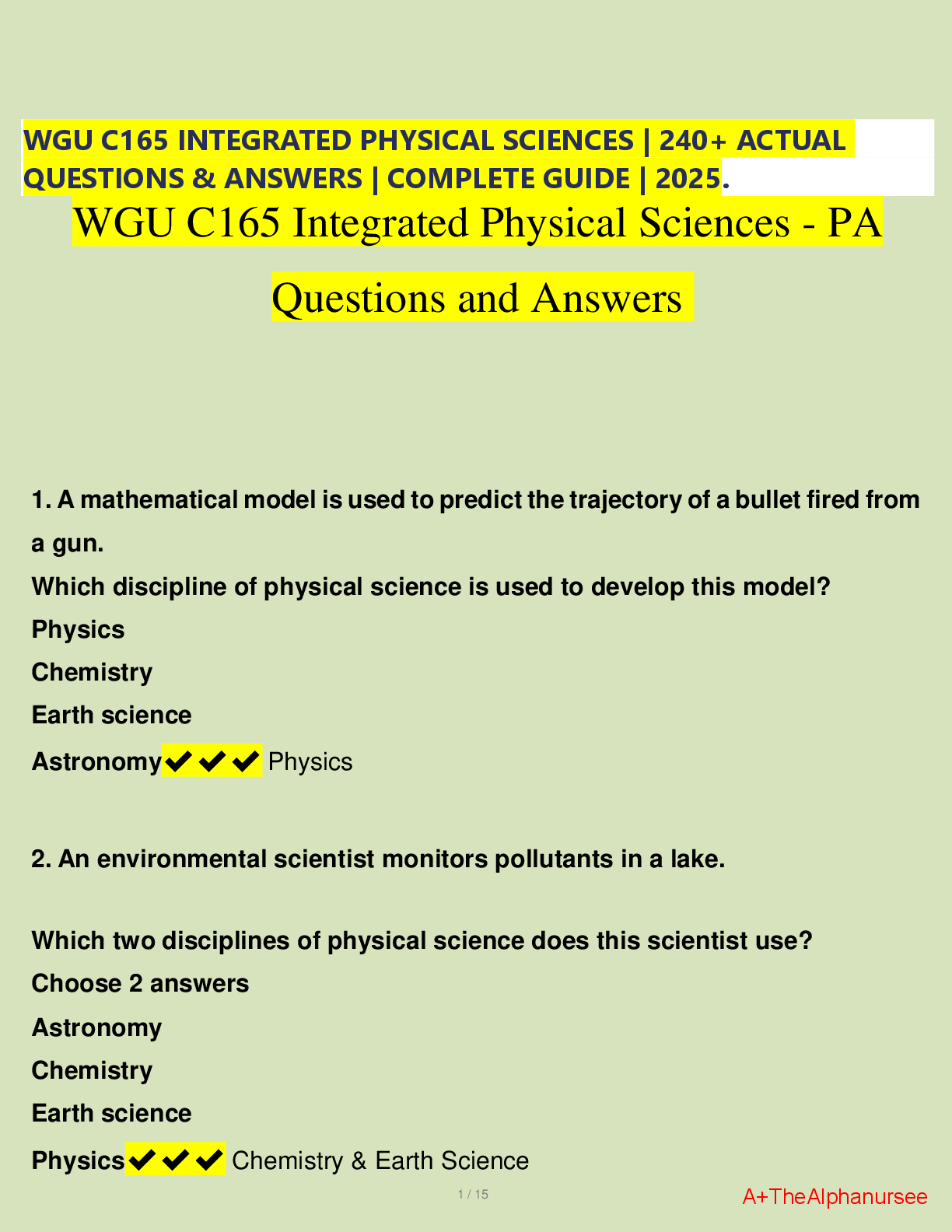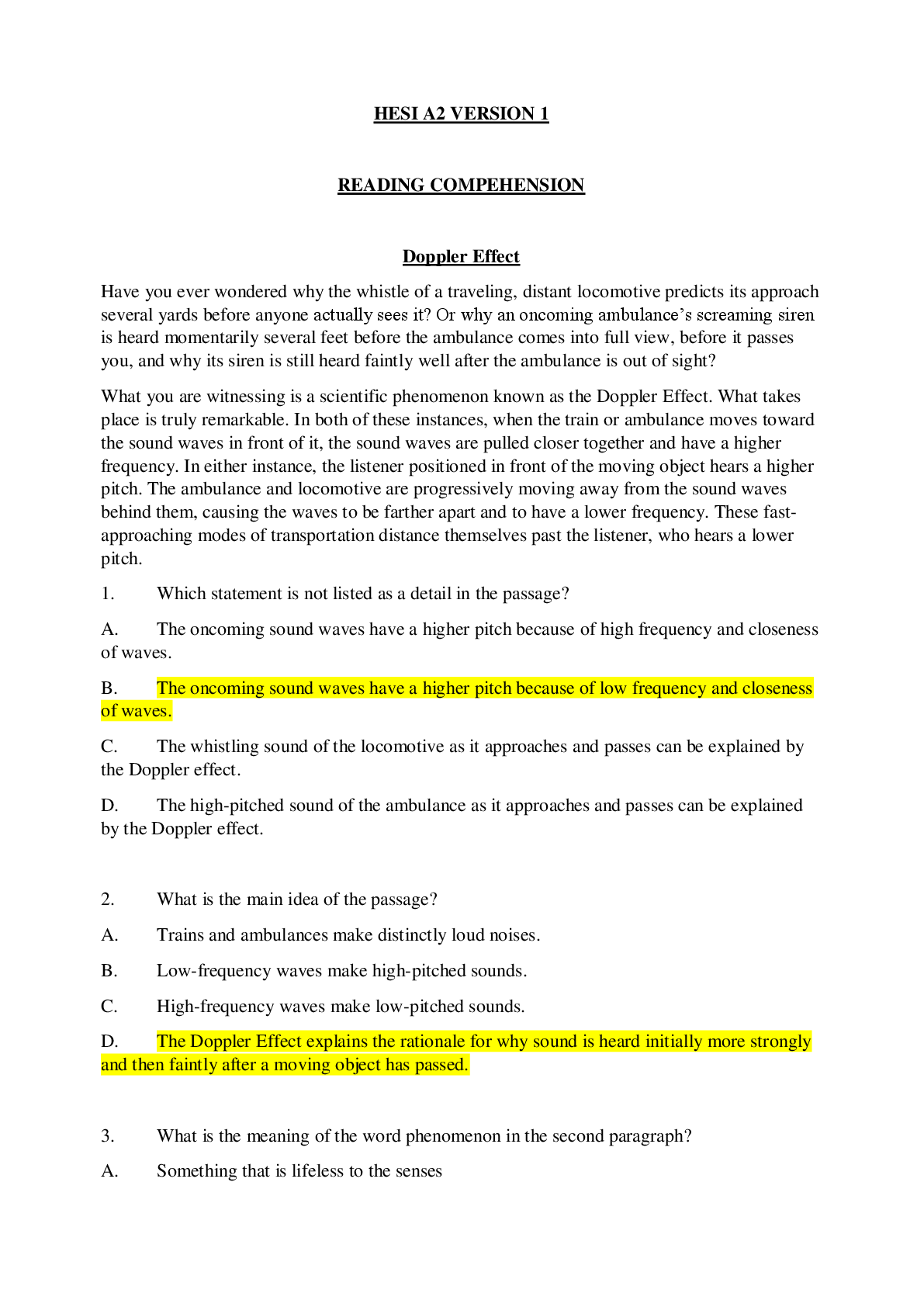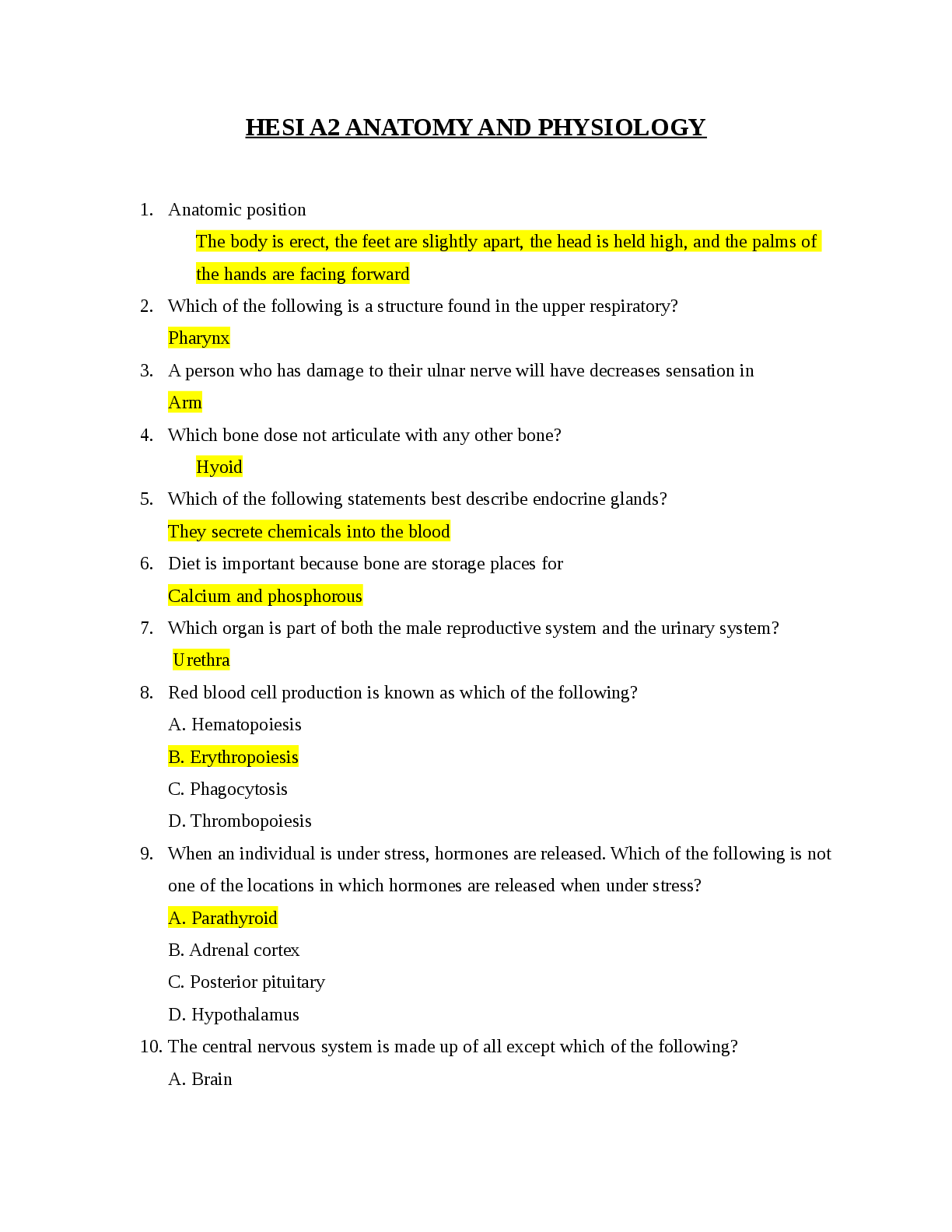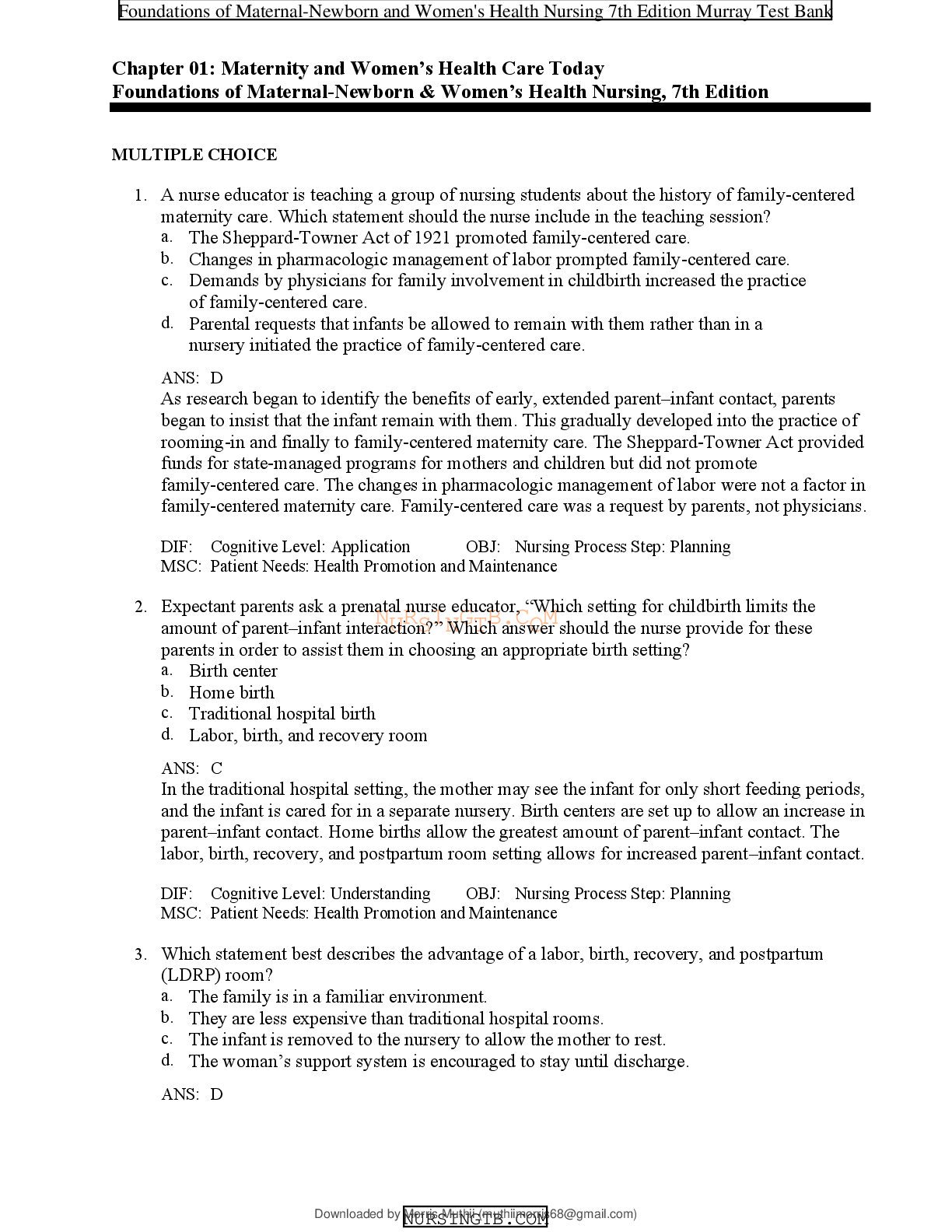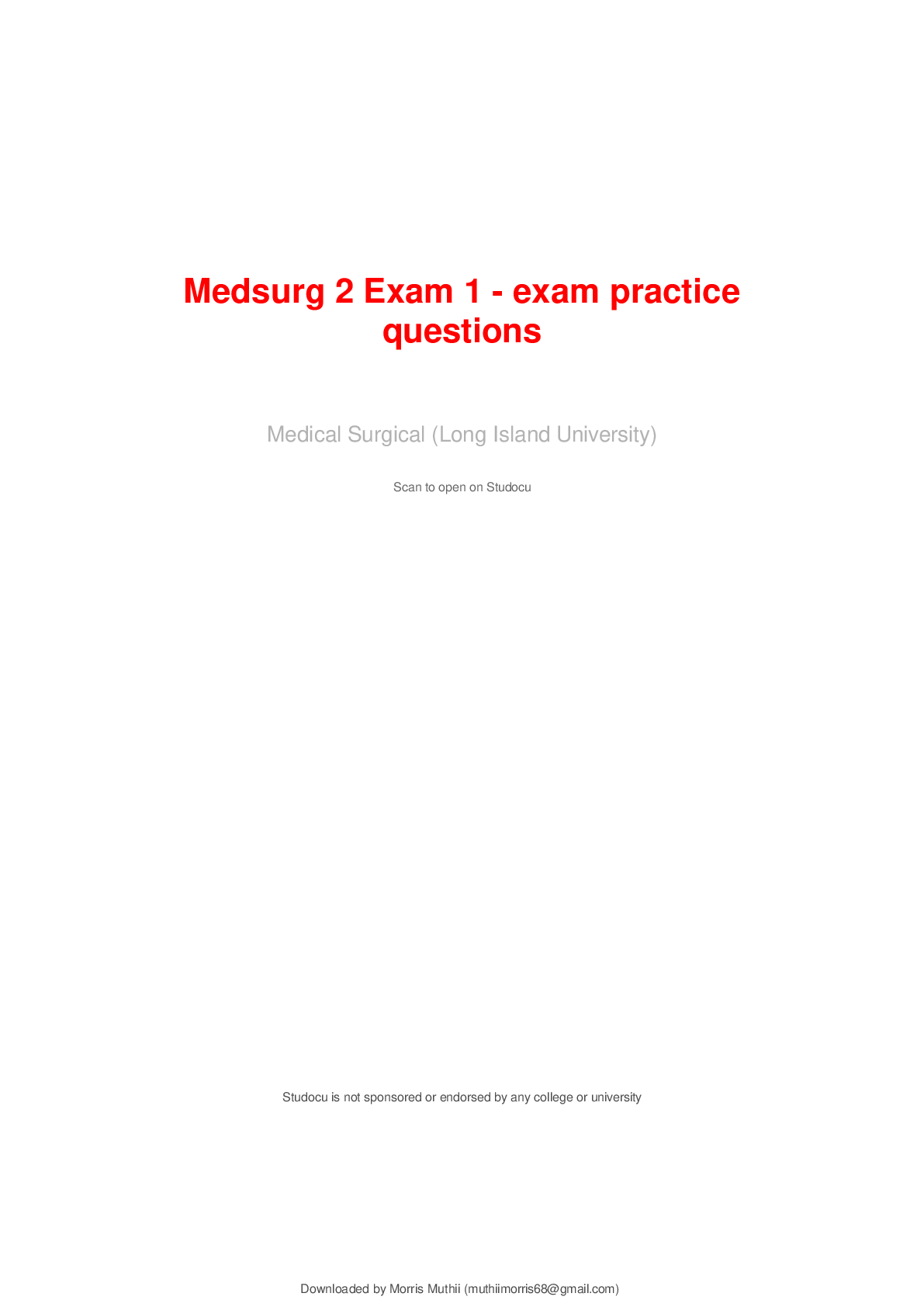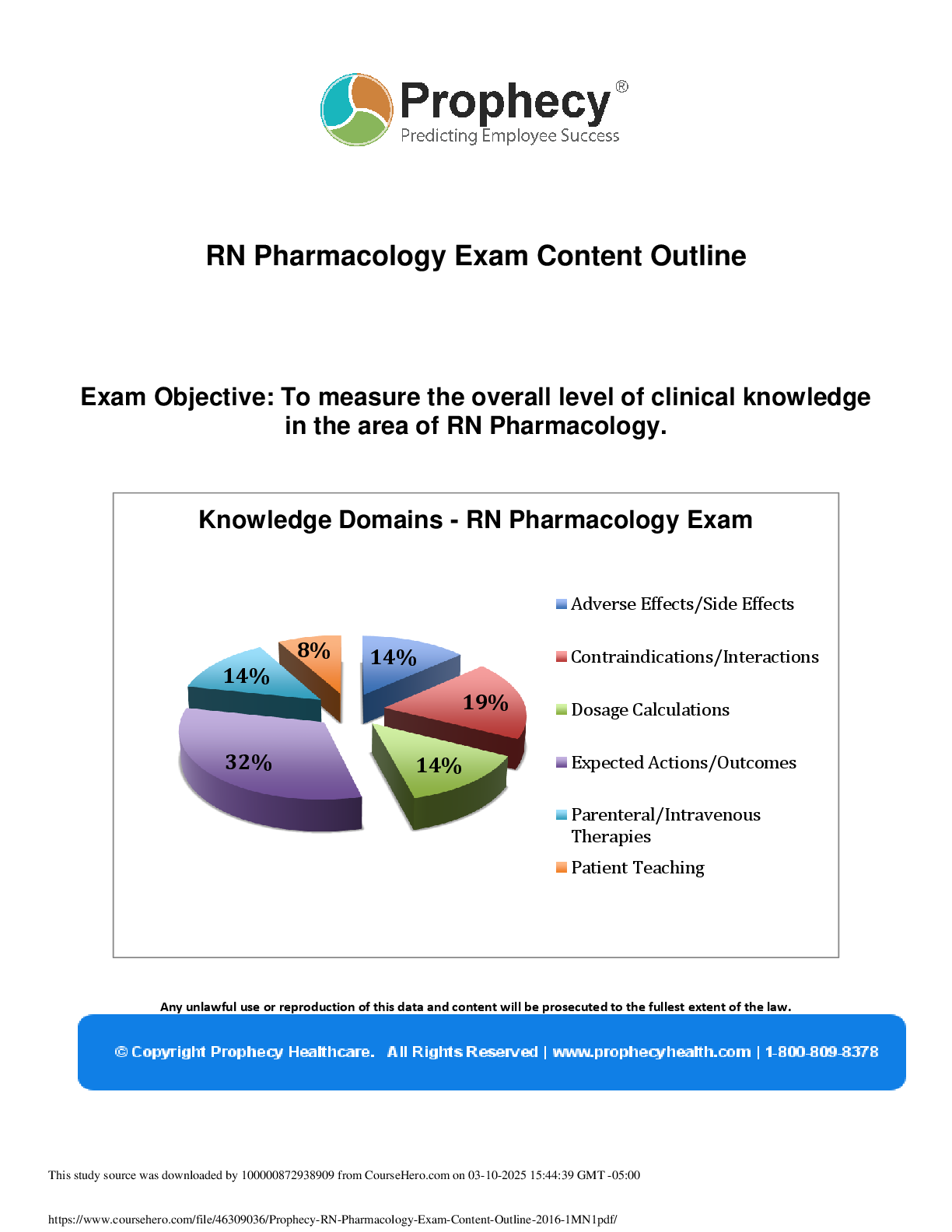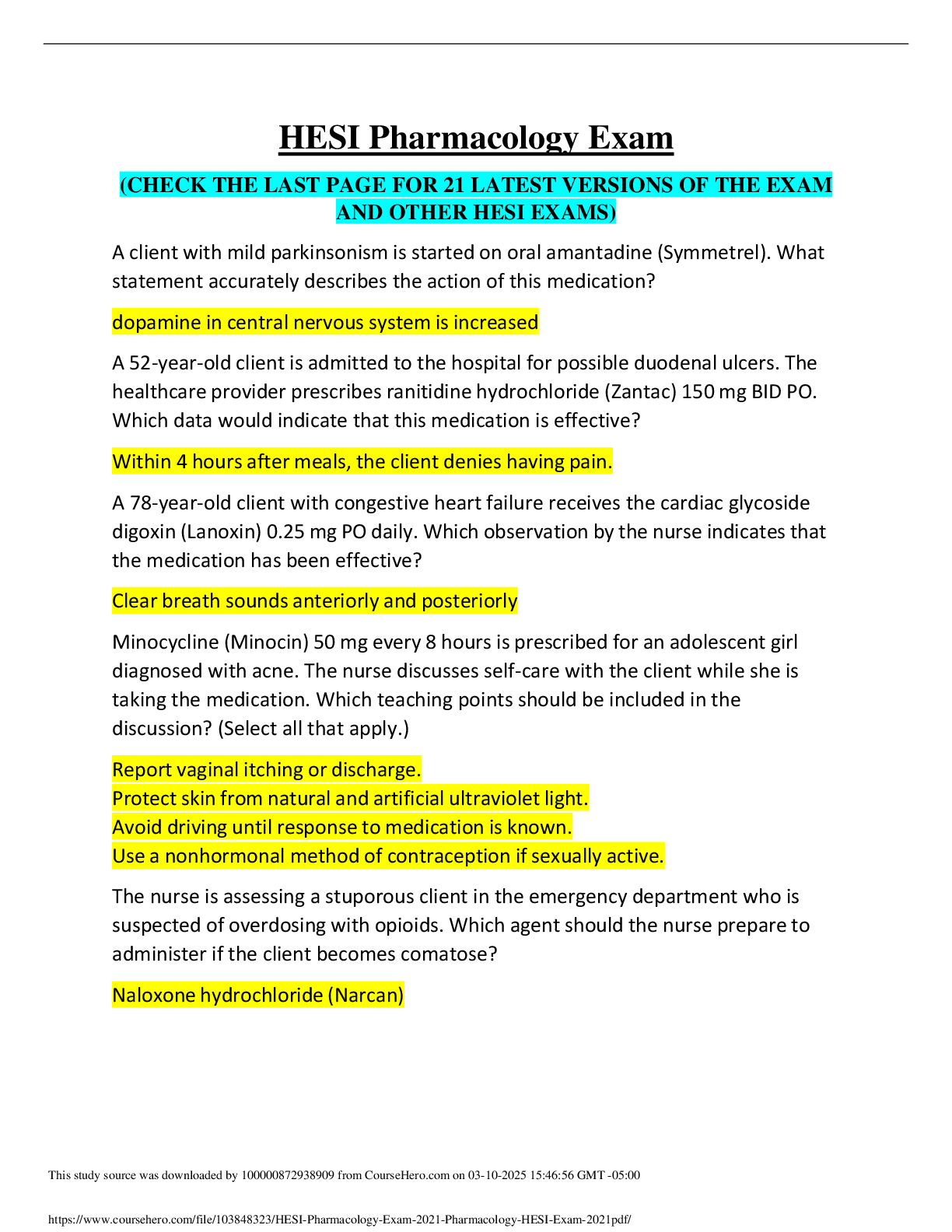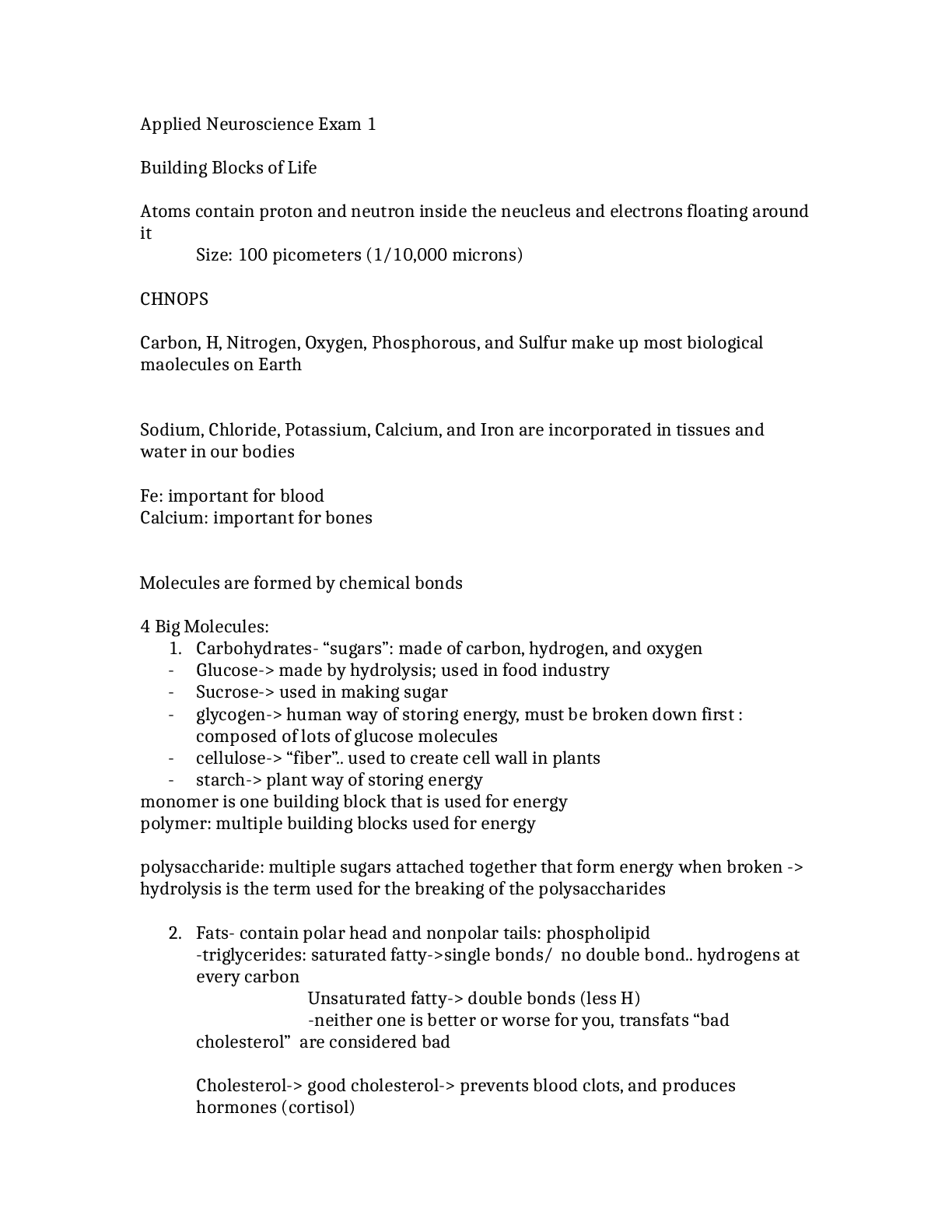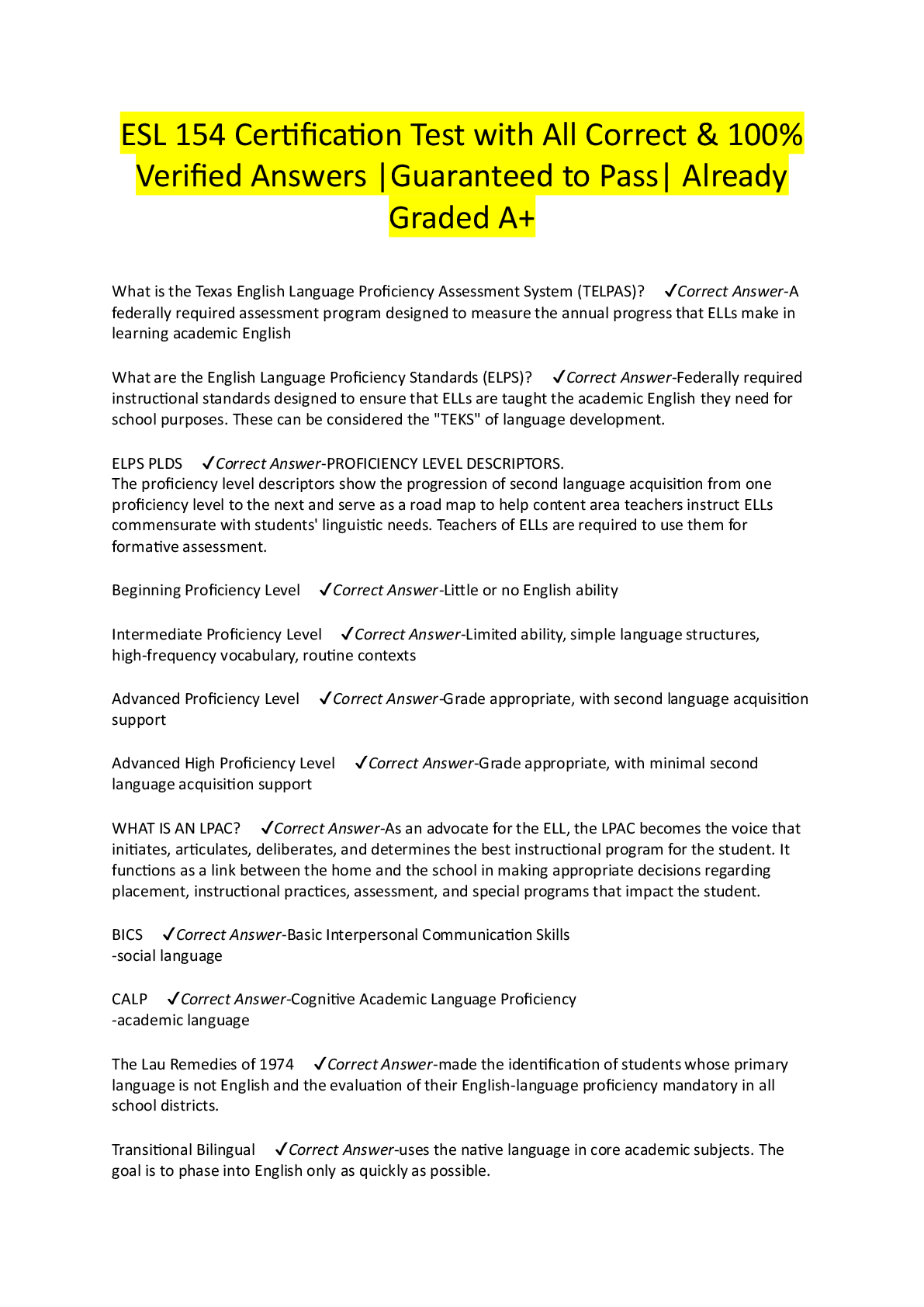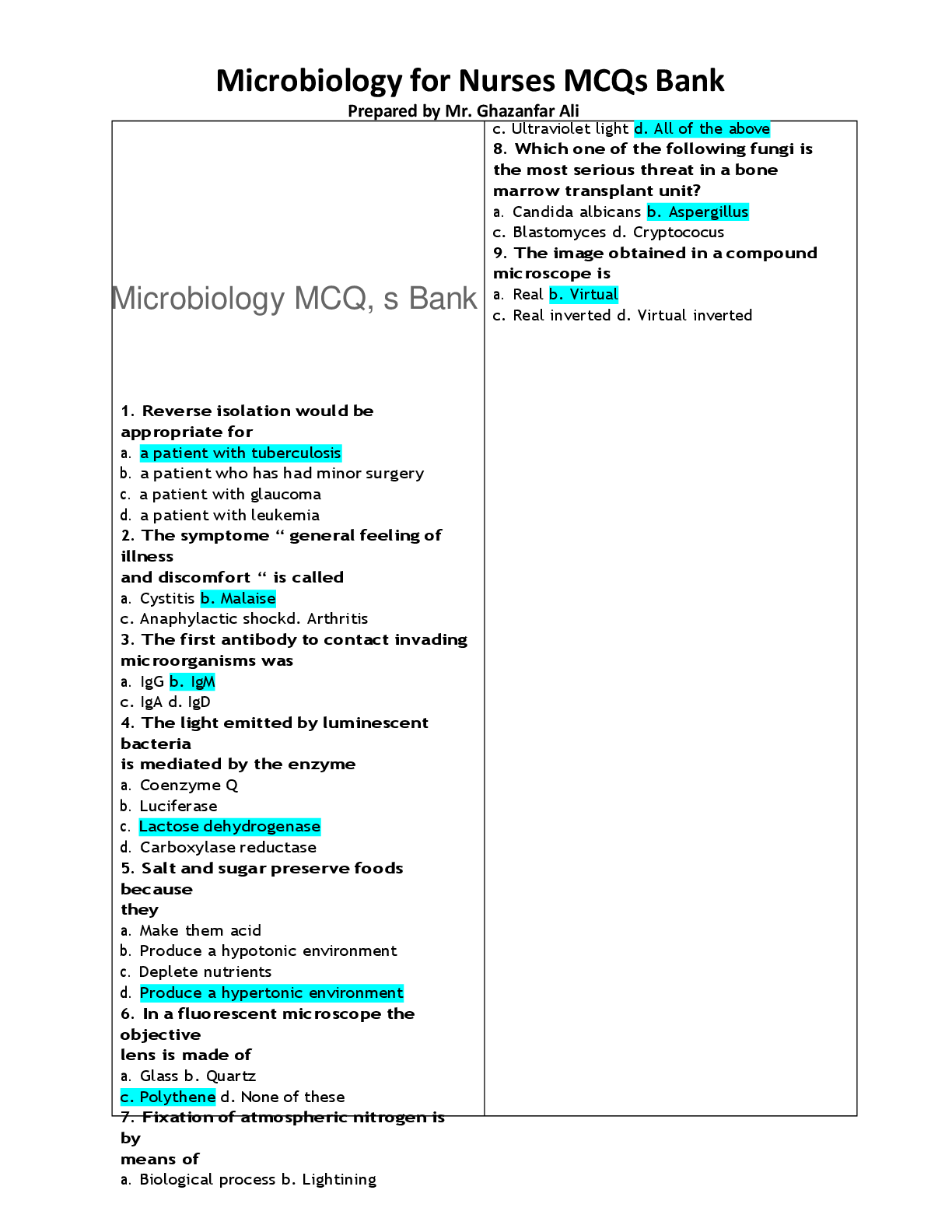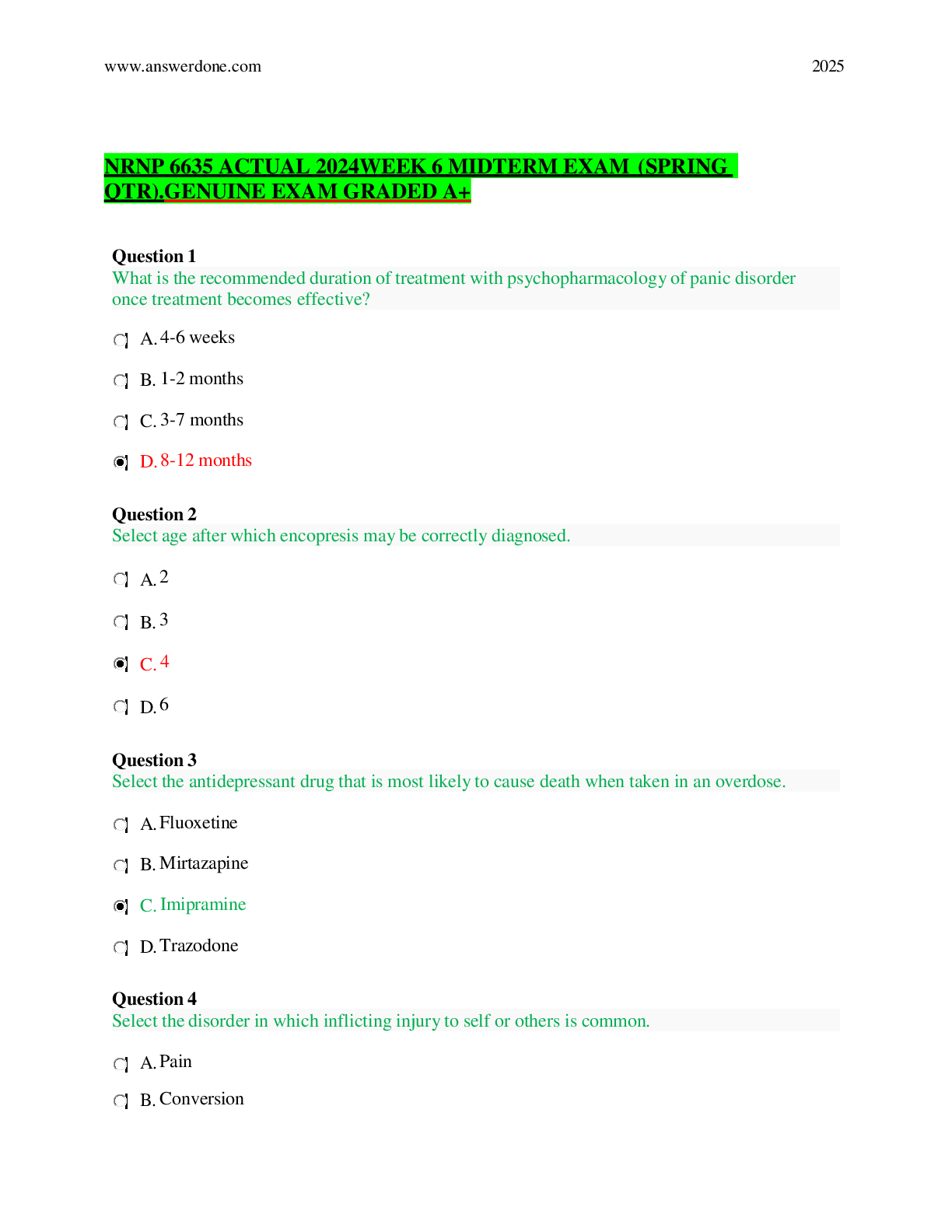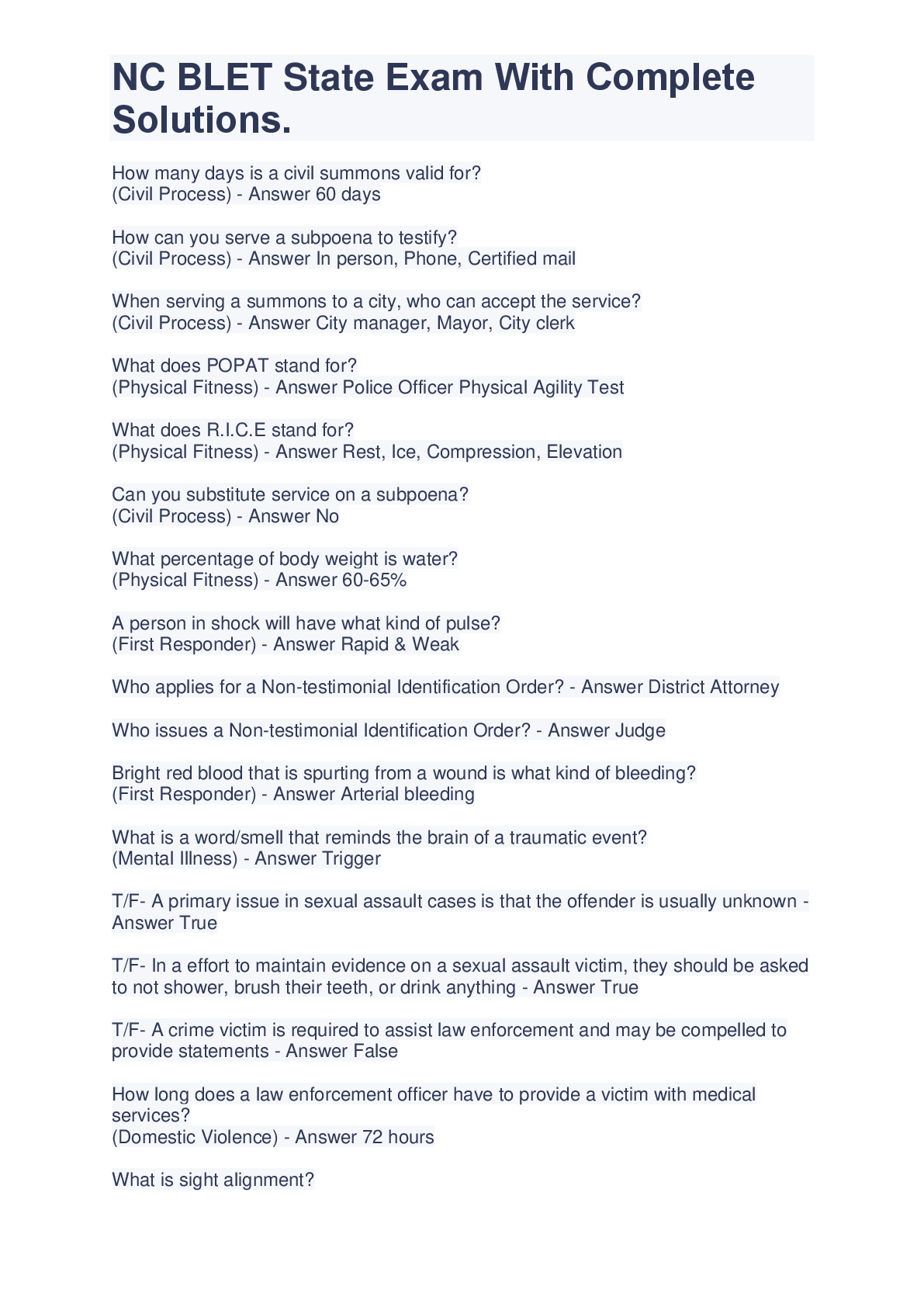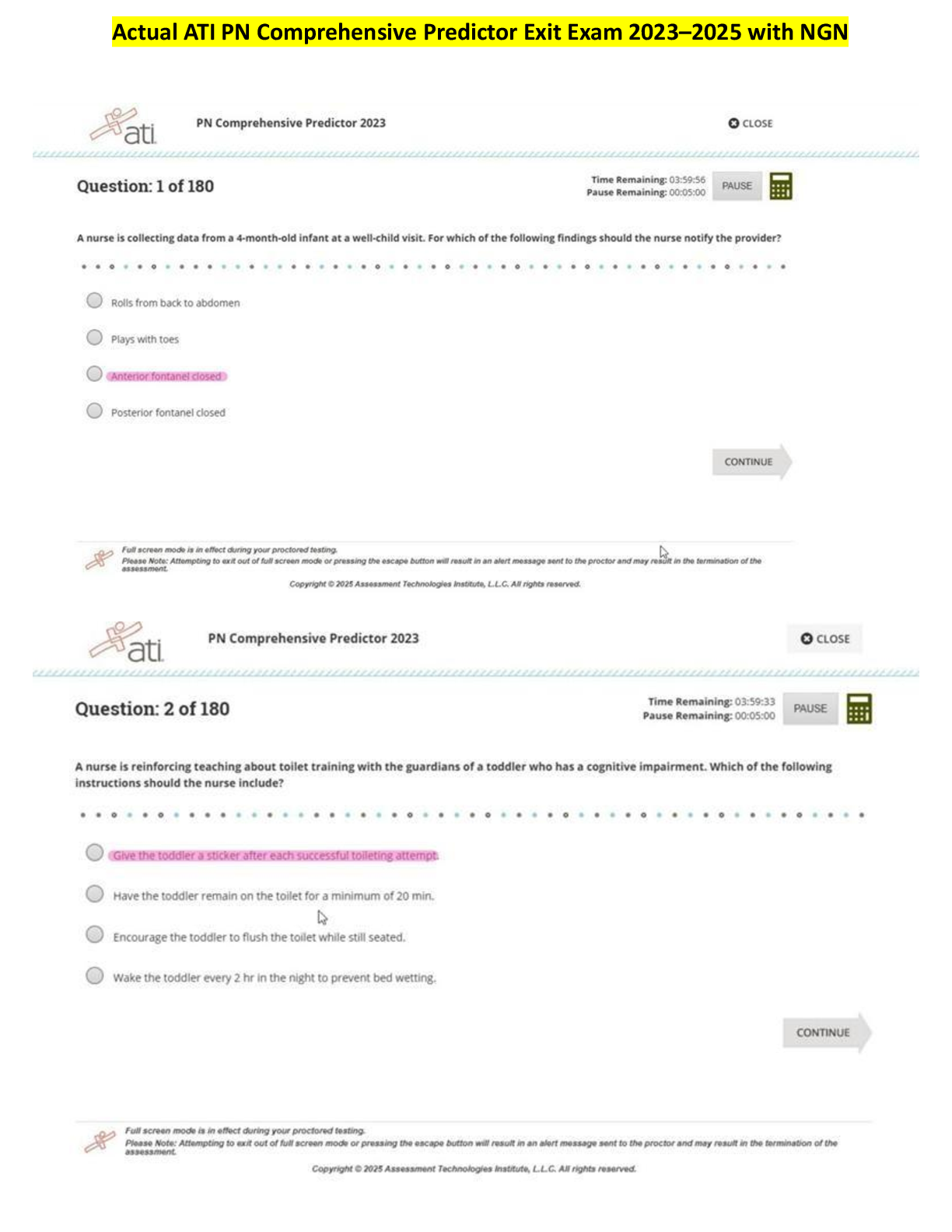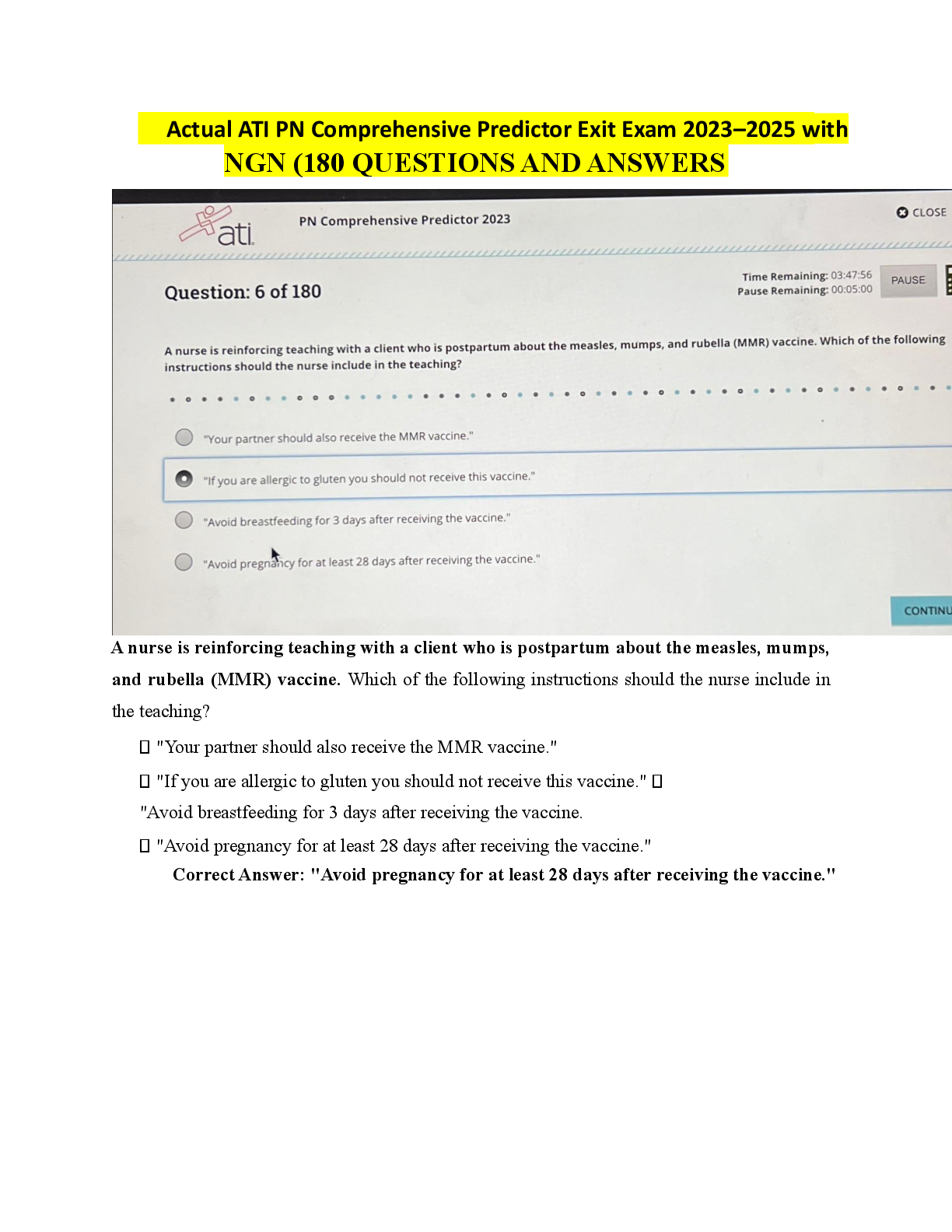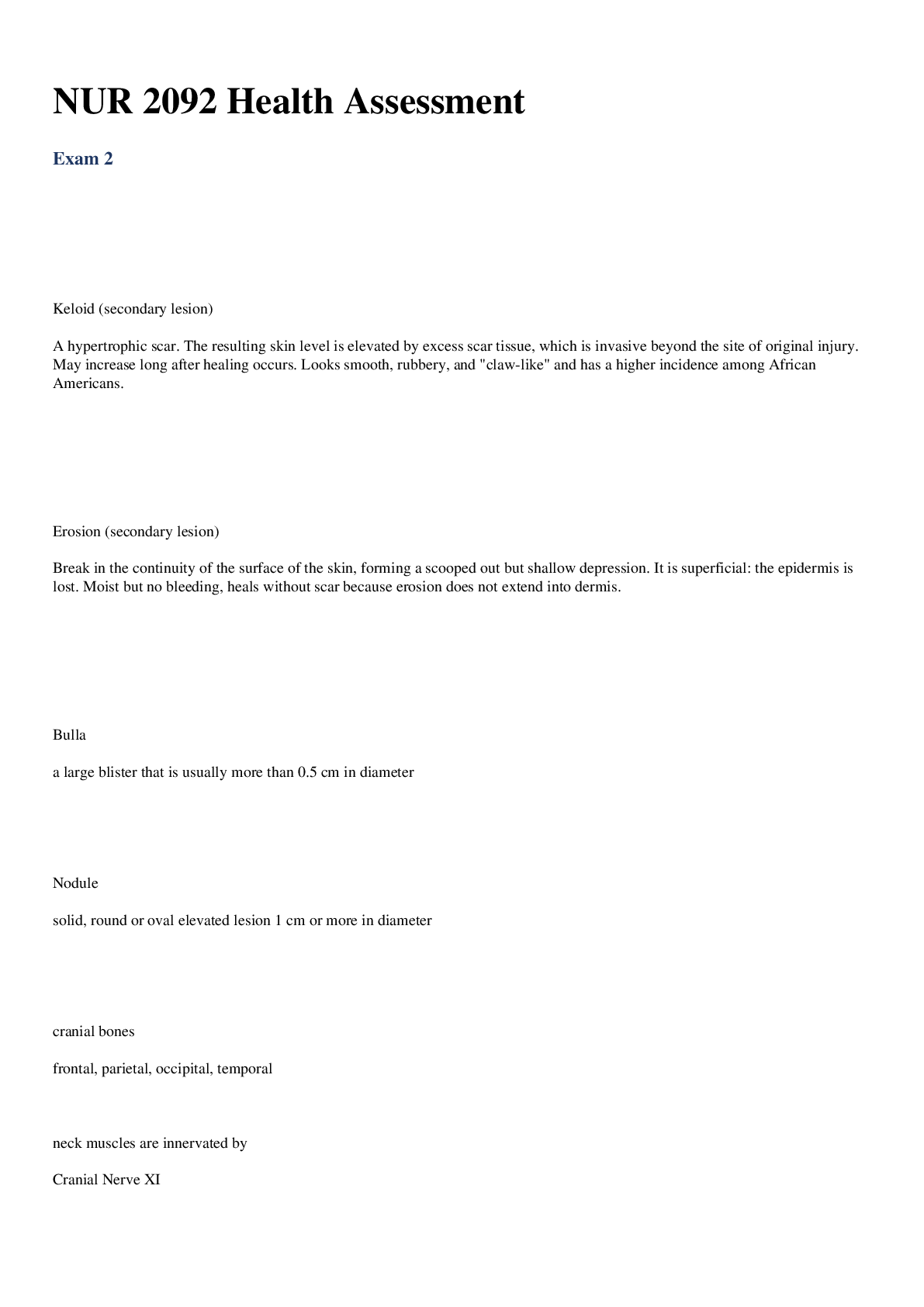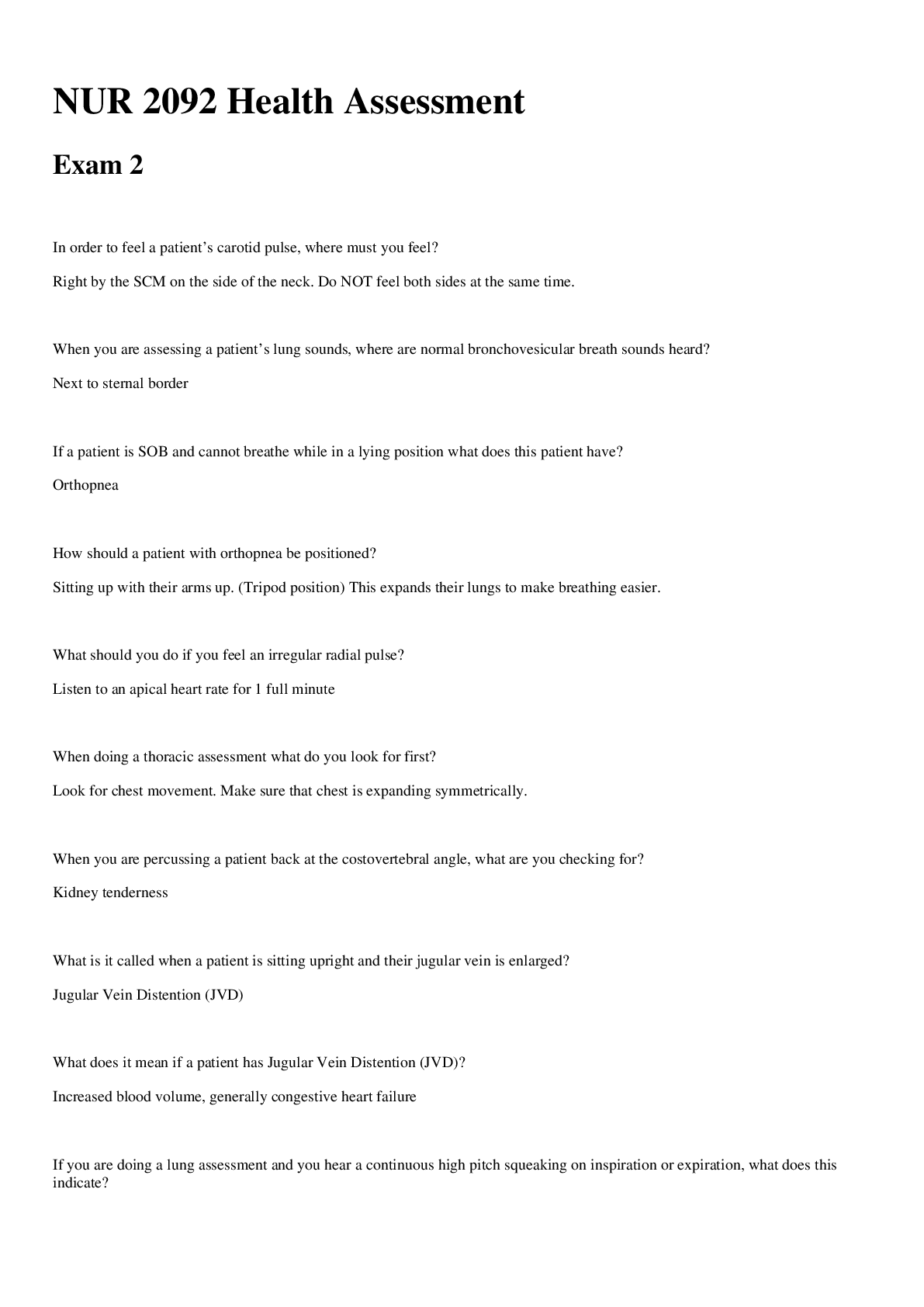Neuroscience > EXAM > Applied Neuroscience Exam 1 (All)
Applied Neuroscience Exam 1
Document Content and Description Below
Building Blocks of Life Atoms contain proton and neutron inside the neucleus and electrons floating around it Size: 100 picometers (1/10,000 microns) CHNOPS Carbon, H, Nitrogen, Oxygen, Phos ... phorous, and Sulfur make up most biological maolecules on Earth Sodium, Chloride, Potassium, Calcium, and Iron are incorporated in tissues and water in our bodies Fe: important for blood Calcium: important for bones Molecules are formed by chemical bonds 4 Big Molecules: 1. Carbohydrates- “sugars”: made of carbon, hydrogen, and oxygen Glucose-> made by hydrolysis; used in food industry ---- Sucrose-> used in making sugar glycogen-> human way of storing energy, must be broken down first : composed of lots of glucose molecules cellulose-> “fiber”.. used to create cell wall in plants starch-> plant way of storing energy monomer is one building block that is used for energy polymer: multiple building blocks used for energy polysaccharide: multiple sugars attached together that form energy when broken -> hydrolysis is the term used for the breaking of the polysaccharides 2. Fats- contain polar head and nonpolar tails: phospholipid -triglycerides: saturated fatty->single bonds/ no double bond.. hydrogens at every carbon Unsaturated fatty-> double bonds (less H)-neither one is better or worse for you, transfats “bad cholesterol” are considered bad Cholesterol-> good cholesterol-> prevents blood clots, and produces hormones (cortisol) bad cholesterol->blood clots (trans fats) all fats are lipophilic-> water resistant phospholipid-> polar heads, and nonpolar tails don’t allow ions to flow through but are able to glide through water polar heads- hydrophilic- can mix with water nonpolar tails- hydrophobic – cannot mix with water -certain ions can make there way inside but, -keeps what is inside the cell from being diffused with water -molecules and ions cant go in, unless channels are created 3. Proteins- 20 amino acids Amino acid-> peptide(string of amino)-> protein( complex chain of amino that folds “quaternary structure”) Proteins- receptors for neurotransmitters -products of genes 3. Nucleic Acids DNA and RNA-> how proteins are made Nucleotides: sugar( ribose or deoxydribose), phosphate, nitrogenous base, nucleotide bases are bonded together by hydrogen bonds Sugar and phosphorous- make up backbone Hydrogen- form bonds Nitrogen- makes the bases DNA: A, T, G ,C RNA: A, U, G, C Purine bases (2 rings): A, G Pyrimidine bases (1 ring) : C, T , U Mitochondrial DNA-> made through oxidative phosphorylation-> creates ATP-maternal inheritance Chromosomes- thread like string of DNA Centromere- tightly packed part of DNA (heterochromatin [Show More]
Last updated: 9 months ago
Preview 1 out of 45 pages

Loading document previews ...
Buy this document to get the full access instantly
Instant Download Access after purchase
Buy NowInstant download
We Accept:

Reviews( 0 )
$18.50
Can't find what you want? Try our AI powered Search
Document information
Connected school, study & course
About the document
Uploaded On
Mar 11, 2025
Number of pages
45
Written in
All
Additional information
This document has been written for:
Uploaded
Mar 11, 2025
Downloads
0
Views
47

